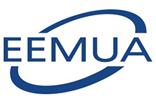This international conference in the field of Subsea Controls & Data Acquisition is aimed at those engaged in control, monitoring & distribution of subsea systems. The conference provides a unique forum for operators and suppliers of subsea controls & umbilicals technology to network and exchange views and experiences.
The aim of this particular conference is to bring together the many diverse disciplines engaged internationally in Subsea Controls and Umbilical technology, to share experiences gained by discussing regional challenges, as well as new advances in global subsea technology. For this conference the theme will be “Enhancing Value for the Future: Lessons Learned and New Technologies”, showcasing ways of bringing new ideas and technology to provide operational cost savings plus understanding from an operator’s viewpoint how we can learn from experiences locally and internationally.
Event Flyer
Post Event Report
Photoboard
Wednesday Presentations:
Keynote: Technology Disruption, Data Science & Subsea
Sean Salter, Woodside Energy Ltd (permission denied)
Effect of Condition Monitoring System on Availability of Subsea Equipment
Leong Pei Chze, Forsys Subsea
Integrated solution for Operational Metering, Surveillance and Condition Based Maintenance
Luca Letizia, Schlumberger Software Integrated Solutions (SIS)
DC/FO, A Lean and Powerful DC Subsea Control Infrastructure
Ronan Michel & Stephen Keenlyside, Alcatel-Lucent Submarine Networks
System Sustainability & Obsolescence Management, the foundation for optimsed life of field partnership
Ned Chapman, GE Oil & Gas
Power Buoy – Alternative Development Scenario with Minimal Umbilicals
Benjamin Ahani, Aker Solutions (permission denied)
Understanding Electric Actuation Technology and its Impact on Subsea Projects
Andrea Rubio, OneSubsea, a Schlumberger company
Subsea Electric Systems Enter a New Era
Ajith Kumar & John Lovas, FMC Technologies
DigiTRON3 – Providing a Compact Cost Effective Electrical Connector Solution Where you Need it Most
Liam Widdrington, Siemens Subsea
Integrating & Operating A New Salinity Measurement System As Part of A Wet Gas Meter – Experiences from an Australian Pilot
Svein Eirik Monge, Emerson Process Management
Increased Performance and Safety by Means of Subsea Instrumentation
Olav Brakstad, ClampOn AS
Managing Flowline Buckling and Walking with Real time Position Monitoring
Stephen Fasham, Sonardyne International Ltd / Atteris Pty Ltd
Oil / Water / Sand Quality Measurement – The Key Enabler for Subsea Separation Development
Si Huai Yeaw , Aker Solutions
Thursday Presentations:
Subsea All-electric Technology: Now Available for the Future Field Developments
Salvatore Micali, Aker Solutions
Increasing Shareholder Value with Subsea Electric Actuation Systems
Mark Perry, Wittenstein Motion Control GmbH
The Subsea Internet of Things
Brendan Hyland, WFS technologies Ltd
On Umbilicals’ and Power Umbilicals’ Sensitivity to the Ambient Temperature
Magnus Komperød, Nexans Norway AS
An economical subsea wet gas solutions meter – reliable well production solutions for a low cost environment
Alan Downing, Solartron ISA
Monitoring Multiphase flows via Earth’s Field Nuclear Magnetic Resonance
Keelan O’Neill, UWA
Online Real-time Corrosion and Erosion Monitoring of Subsea Pipework and Pipelines with Permanently or Retrofitted Installted Ultrasonic Sensor Arrays
Edd Tveit, Sensorlink
Subsea and Topsides Controls Integration: The New MDIS Integration Standard
David Walker, Yokogawa Australia
Data Analytics – Operational Technology & ‘Big Data’ analytics starts with Machine Knowledge
Ahmed Ibrahim, GE Oil & Gas
V-LIFE: A Technology for the Rejuvenation of Subsea Insulation Resistance Failures
Neil Douglas, Viper Subsea
Closing the Subsea Equipment Feedback Loop
Oddbjorn Gjerde, SEAR Consultant
Life of Field is More Than Just ‘Existence’
Kevin Glanville, Proserv Controls (UK)
Generations of Subsea Control System – Challenges and Solutions
Gunasekaran Settiyannan & John Lovas, FMC Technologies
For further information please contact Jennifer Maninin.

